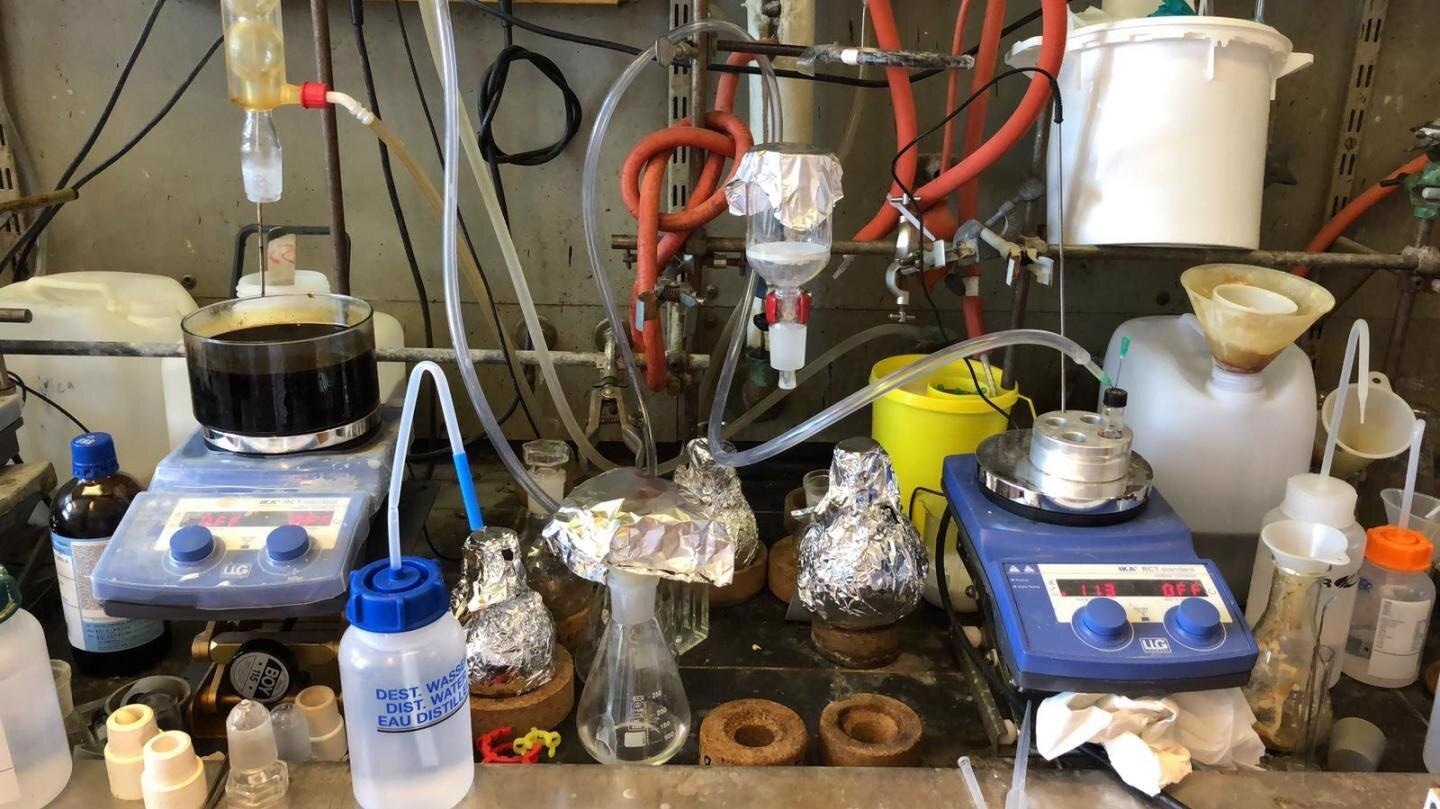
Image Credit: Heloisa Bordallo, The Niels Bohr Institute
A newly developed polymer could trap ammonia, preventing it from polluting the atmosphere, thus improving human health considerably.
Ammonia is a toxic gas that is a major source of air pollution that can harm human health. The compound of nitrogen and hydrogen is a byproduct of both agriculture and industry, and even though it is harmful enough alone — causing damage to eyes, throats, and even in extreme circumstances death — when it reacts with other air pollutants, it forms ammonium salts that can affect breathing. These fine particles can travel large distances in the atmosphere, thus becoming a widespread problem rather than a localized one.
Enter researchers from Niels Bohr Institute and the Department of Chemistry at the University of Copenhagen. They have designed a porous polymer that can trap small molecules including ammonia. The team’s development could be a major benefit to human health and it is discussed in a paper published in the journal ACS Applied Materials & Interfaces¹.
If we want to use this material in a real application to solve an important societal problem like ammonia pollution, it is important to explain how ammonia is captured by the porous network in the polymer. This implies that we needed to come up with a technique that allows us to find out exactly how the interaction between the polymer and ammonia takes place.
Heloisa Bordallo, Associate Professor, The Niels Bohr Institute
Bordallo continues by explaining that should the team be successful in answering this question, it will allow materials scientists to better understand how this or other polymers can be efficient in other fields, including nanomedicine and protective coatings.
The big developments that the team’s polymer could yield, came from a very tiny source indeed.
Learning a Lot from a Little
The team’s journey to an ammonia trapping polymer began with the synthesis of just 2 grams of the material by team members Jiwoong Lee, assistant professor in the Chemistry Department at the Niels Bohr Institute, and Rodrigo Lima, a former postdoc at the same institute.
Whilst 2 grams may sound like an insignificant amount of a substance, for the team’s purposes, it was actually quite substantial. In fact, for most chemists, just a few milligrams would actually suffice.
After this polymer genesis, the duo then set about a number of testing techniques to assess the material’s properties. This resulted in a surprise for the team that led them to connect their polymer to the important task of ammonia capture.
“The synthesis process often involves washing the material with solvents and it was a nice surprise to realize that the porous polymer actually kept a portion of these solvents inside,” explains Lee. “This was indicative of the material’s ability to perhaps capture other pollutants, such as ammonia.”
The team continued to investigate their polymer by studying the dynamics of the hydrogen bonds, collecting neutron scattering data at low pressure to get ammonia into the polymer. The neutron scattering, performed at the ISIS Neutron and Muon Source part of the STFC Rutherford Appleton Laboratory in the UK, helps describe how the atoms are arranged within the polymer and how they move throughout it.
Following this, Lima took the material and conducted thermal analysis upon it. This revealed that the ammonia wasn’t just being captured by the polymer. It was actually binding to it. “This was a real surprise! The polymer binds ammonia very strongly,” the former postdoc explains.
What Binds the Polymer and Ammonia?
Understanding how ammonia binds to the polymer so strongly means investigating the structure of the latter more closely. Unfortunately, as the polymer the team synthesized is amorphous — which in chemistry means ‘not crystalline, or not apparently crystalline’ — its structure is not easy to analyze.
“In a way, you could say that we had ticked the box of capturing the ammonia, but we still needed to explain how this happens — and for that, we needed a better view of the structure, which was unattainable,” Bordallo explains. “Quite a dilemma to have full success in one part of the project, and not be able to explain exactly why.”
To tackle this dilemma, the team turned to computer modeling — in particular a technique called DFT — to assess different arrangements of the polymer’s building blocks. Eventually, this machine learning technique — which Bordallo hopes to expand to other amorphous systems — revealed how and why the polymer binds so tightly with ammonia. Thus, ticking that last remaining box.
Of course, now the team and their ammonia trapping polymer face new challenges, particularly assessing which industries the development could benefit, and how production can be scaled up to meet the demands of said industry.
There are numerous applications for a polymer that captures ammonia. It would be useful in labs, as a coating for masks to wear for personal safety, as ammonia is toxic and also very corrosive. It could be used as filters, reducing the spread of ammonia released through the exhausts from many types of industry. Thinking ahead, it is possible that the polymer technique could be applied to other types of pollutants as well.
Jiwoong Lee, Assistant Professor, The Niels Bohr Institute
Bordallo concludes, “If scaled up — which is not a simple process — this could have a significant positive impact on the working environment of many people all over the globe.”
References
¹Lima. R. J. S., Okhrimenko. D. V., Bordallo. H. N., et al, [2020], ‘Ammonia Storage in Hydrogen Bond-Rich Microporous Polymers,’ ACS Applied Materials & Interfaces, [https://doi.org/10.1021/acsami.0c18855].
Disclaimer: The views expressed here are those of the author expressed in their private capacity and do not necessarily represent the views of AZoM.com Limited T/A AZoNetwork the owner and operator of this website. This disclaimer forms part of the Terms and conditions of use of this website.